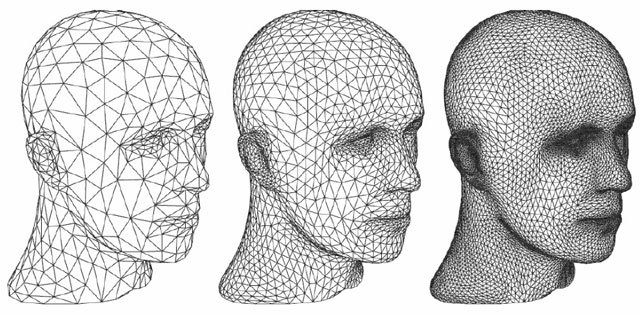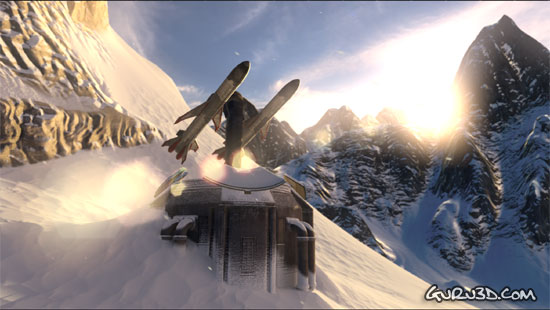Page 9 - A new beginning - Tessellation
Tessellation - adding more detail to 3D objects, realtime.
What I really love in this industry is the development of new technology. Originally a new feature is hardly supported, think HDR, for example. Who of you would have thought it would become such a big thing? With that being said, ATI is introducing a new technology in their R2000 series and it's called tesselation; yes the HD 2900 XT has a programmable tessellation unit. Now before I explain what it is; please understand that the hardware can do it, yet the games are not yet supporting it (yet). I think it'll take at least a year before we see some level of support for it. It's good to see this function moved into the GPU for sure.
Okay, my one-liner to make this technology understandable: turn a low polygon model into a higher polygon model. Tessellation allows a dynamic variation of an object's level of detail.
Tessellation isn't 100% new, as Matrox's Parhelia already supported adaptive tessellation at a very decent level in it's hardware, but ATI decided to introduce it in hardware at the 2000 Series and gee gosh golly! The XBOX 360 also supports it. Tessellation simply means increasing your polygon number to get more detail. Look at the image below.
Tessellation is the process of subdividing a surface into smaller shapes. To describe object surface patterns, tessellation breaks down the surface of an object into manageable polygons. Triangles or quadrilaterals are two usually used polygons in drawing graphical objects because computer hardware can easy manipulate and calculate these two simple polygons. An object divided into quads and subdivided into triangles for convenient calculation.

Now at the first frame you can see a face. There's a small number of polygons in there. We live in 2007, we want detail, right? So by recursively applying a subdivision rule we can increase the number of polygons. Now look at the second and third face. There's so much more detail. This process can now be done 100% at GPU level.

So why does Tessellation matter to you? Why is this so important? Well, combine it with a displacement map (displacement mapping will take a 2D, grayscale image and uses each shade of grey to represent a "height" value) the developers don't have to create extra geometry; only pass down a set of 2D maps and you can now add intently nice detail towards an 3D object ... And I do mean really good detail, literally.
Another good example for the usage of tessellation would be terrain building. This technique is especially useful for creating complex-looking terrain using a combination of very simple base geometry with a height map, and a texture map. And perhaps more interesting is that this generated terrain can be deformed dynamically by manipulating the height map. A scene could have much polygonal complexity closer to the viewer or camera, and fewer polygons as distance from the camera increases.
Anyway, really technical but just remember this, Tessellation will allow much higher quality rendering/ animation at less GPU cost. The generic rule here is the more tessellation, the slower it gets, yet since there's now dedicated core logic for it on the GPU, it's fast and can boost your detail massively thus giving an impression of sharpness and fine quality. The higher the level of tesselation, the closer to realism the sharpness of the surface approaches.
 The mountains in this Ruby technology demo are tessellated. Observe the detail.
The mountains in this Ruby technology demo are tessellated. Observe the detail.
